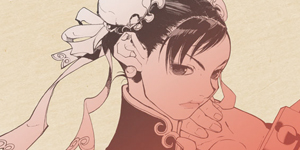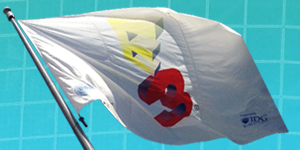Extra: Flashback Vol. 5 – Nintendo GameCube
The Nintendo GameCube was a curious little system when it launched in 2001: its flagship color was purple, it came with a built-in handle, and all its games came on tiny discs. Those games, however, are what made the GameCube so great. The Wii U’s remake of The Legend of Zelda: The Wind Waker reminds us of one such classic, but there are many more titles worth revisiting. For this edition of Flashback, we take a nostalgic look back at four such games with original artwork and retrospectives. Each of us chose two titles that best represent our time with the GameCube. They may not be the games with the highest review scores or the system sellers that helped keep the console afloat, but they are the ones that wore down our WaveBird batteries. Or as the GameCube’s own launch slogan best puts it, they’re the games we were “Born to Play.” Enjoy!

Jose’s Pick: Pikmin 2
So you return from your adventure being stranded on a mysterious planet for thirty days, almost dying from the atmosphere or from its many dangerous native creatures, only to be sent back to collect all the treasure you can carry. That in a nutshell was the premise of Pikmin 2. There was no time limit, just a ton of treasure to collect and creatures to discover. Like in the first Pikmin, you accomplished your mission with the aide of small creatures called… Pikmin. With up to a hundred of them under your control at once, you could send them to battle or to take treasure back to your ship. They came in five flavors, each with their own special abilities and resistances. This made the game strategic and methodical at times, yet fast and chaotic at others.
What I loved most about Pikmin 2 was its challenge and length. When the game was completed and I was left wanting more, I got just that. There were still some new creatures to fight and treasure to find. This game did not hold you by the hand either as enemies that could potentially wipe out your entire army in one go eventually became more commonplace. And don’t get me started on the co-op missions, which were the definitive way for me to play Pikmin 2. I loved this game so much that it set the bar really high for any Pikmin games to follow. Maybe it was set a little too high, with Pikmin 3 making me feel unchallenged and with far less things to do. So I might as well replay this one again. I don’t think I can ever get tired of it.
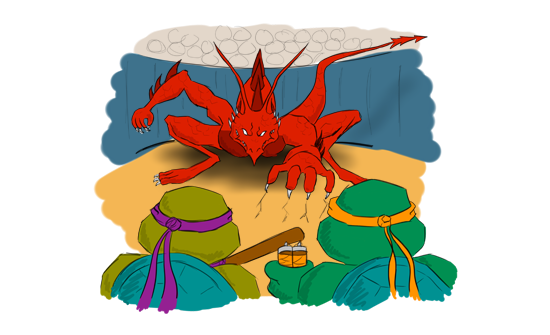
Jose’s Pick: Teenage Mutant Ninja Turtles 2: Battle Nexus
I like to think I am a pretty big Nintendo fan, but compared to my love for Teenage Mutant Ninja Turtles… Well, there is no comparison. The 2003 TMNT series was the pinnacle of my obsession with the cartoon. The show was amazing and to my luck, all the GameCube games based on it were fun and actually good in my unbiased (really!) opinion. TMNT 2: Battle Nexus was by far the best of the three. It went above and beyond in gameplay, presentation, and content to offer an excellent beat ’em up experience. It followed the plot of the show pretty well, but also managed to create some side stories of its own to add more to the TMNT universe. Fighting was simple and fluid and having four players at once made for a grand ol’ time.
This was a two-disc game, and that space was really used up. There were hidden levels, challenges, and even the original TMNT arcade game hidden in there. If someone is available to play co-op with, it’s definitely a must with this game. Though it could be completed by yourself, beat ’em ups by nature are always more entertaining with more people. Of course, with it being a TMNT game that followed the show so closely, it could only be really appreciated by someone who was a fan of the series at the time. Licensed games are usually not known for quality, and the TMNT brand is no exception to that. Luckily for me, this satisfied my TMNT game craving.
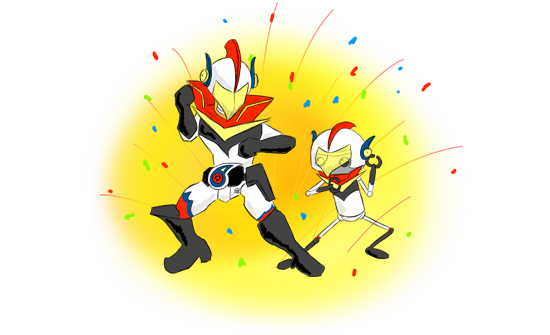
Jason’s Pick: Chibi-Robo
The beauty of video games is that they let you escape reality. You can enter a world full of mushroom power-ups and warp pipes, explore the reaches of outer space, or drive around a city at insanely high speeds. Alternatively, you can do some household chores as a tiny three-inch robot. That was the premise of Chibi-Robo, a charming third-person adventure game that put you in the shoes of a robotic assistance who thrived off doing miscellaneous tasks for the family that bought him. But over the course of the game, things began to get a bit crazy. As Chibi-Robo’s world expanded, players meet other inhabitants of the house, such as action figure hero Drake Redcrest, an army of toy eggs known as the Free Rangers, and a toy mummy who had fallen in love with a princess doll. And just when things seemed like they couldn’t get any wackier, the game took a turn for the sad and serious, making Chibi-Robo’s roll in the family more important than ever.
Of course, none of this mattered if the game itself wasn’t fun to play. Luckily, Chibi-Robo delivered. The game saw our robot hero exploring his owners’ house and backyard to collect items and complete goals, limited by his own battery life and the hours in the day. As more tasks were completed and new items were discovered, you were able to extend the battery, allowing for more exploration and the introduction of all those whacky characters. This helped create a sense of steady progress in a world that ultimately became an open playground. At first, activities were limited to scrubbing the floor with a toothbrush and utilizing platforming skills to navigate tables and countertops. But you soon earned access to other abilities, such as a blaster to shoot the nighttime-dwelling Spydorz and a helicopter to fly to hard to reach places. Chibi-Robo could also don costumes that granted him even more abilities. It all unfolded at the perfect pace and with just the right amount of charm and personality, making Chibi-Robo an absolute joy to play. It was the final title I purchased for my GameCube and I couldn’t have asked for a better swan song.
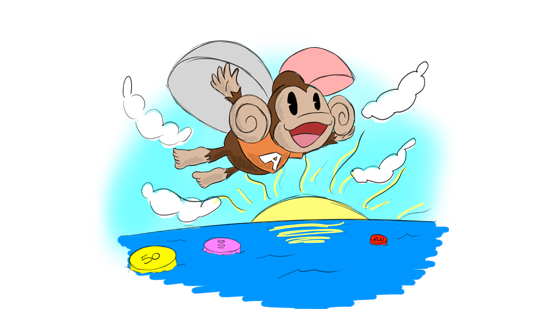
Jason’s Pick: Super Monkey Ball
All you really need to know about Super Monkey Ball is that it involved cartoon monkeys rolling around in giant glass balls. In the off chance that alone doesn’t sell you on the game, the gameplay certainly will. Released as a GameCube launch title, Super Monkey Ball was the perfect embodiment of an arcade-style experience. No matter which of the many modes you chose to play, you were in it to either earn a high score, defeat friends, or do a combination of the two. The Main Game mode centered on the concept of navigating mazes in mid-air without falling off, but instead of controlling the monkey itself, you tilted the entire stage. Quick flicks of the maze could help launch one of the four playable monkeys off ramps, sharp downward turns of the stage led to rapid accelerations, and the slightest of sideways tilts were needed to keep your monkey on incredibly thin platforms. Factor in realistic gravity and momentum physics and the stages could get very tricky very quickly, especially in the harder difficulties. In all, the game featured over 100 stages spread across four difficulties. That alone would have made for a solid package, but Sega didn’t stop there.
In addition to the core Main Game mode, Sega also included two sets of excellent side activities. The Mini Game category contained full-fledged versions of bowling, billiards, and golf, providing faithful recreations with realistic physics, a variety of options within each game, and multiplayer support (plus the inclusion of monkeys in balls, of course). A little less realistic, but just as fun, was the second set of side activities: the Party Games. Monkey Race offered a Mario Kart-style racing experience with a variety of weapons, while Monkey Fight slapped giant boxing gloves on each monkey ball, tasking up to four people with the goal of punching each other off the stage. Then there was Monkey Target, in which you and up to three opponents took turns launching a monkey off a ramp and gently flying him towards giant scoreboards of different shapes (naturally, the monkey flies by opening his ball into wings). When the moment is right, you close the ball, let the monkey fall, and hope he lands in the right spot – it’s like vertical darts. What made Monkey Target so great was how it perfectly combined every other part of the game: controlling the monkey in flight was like tilting the maze stages, landing just right relied on the physics the other modes taught you, and of course, there were power-ups aplenty to help earn maximum points. Honestly, Monkey Target alone made Super Monkey Ball worth it for me, and I continue to play this mode with friends to this day. In a weird way, the rest of Super Monkey Ball was just an wonderful bonus.
Still feeling nostalgic? Check out our previous Flashbacks:
Vol. 1 – Super NES | Vol. 2 – Game Boy | Vol. 3 – Nintendo 64 | Vol. 4 – Game Boy Advance


